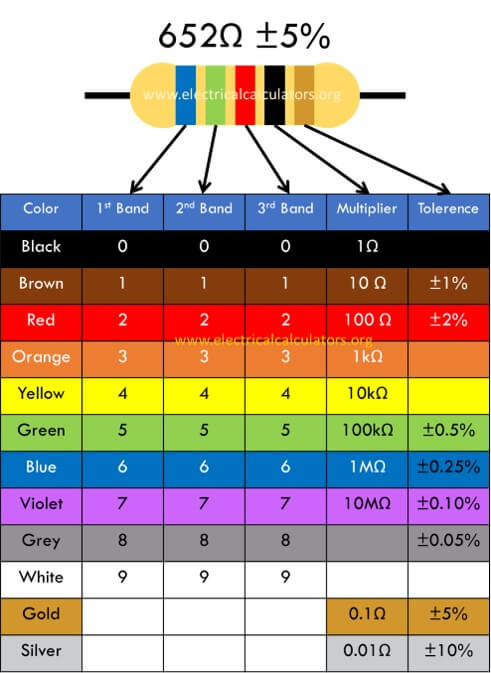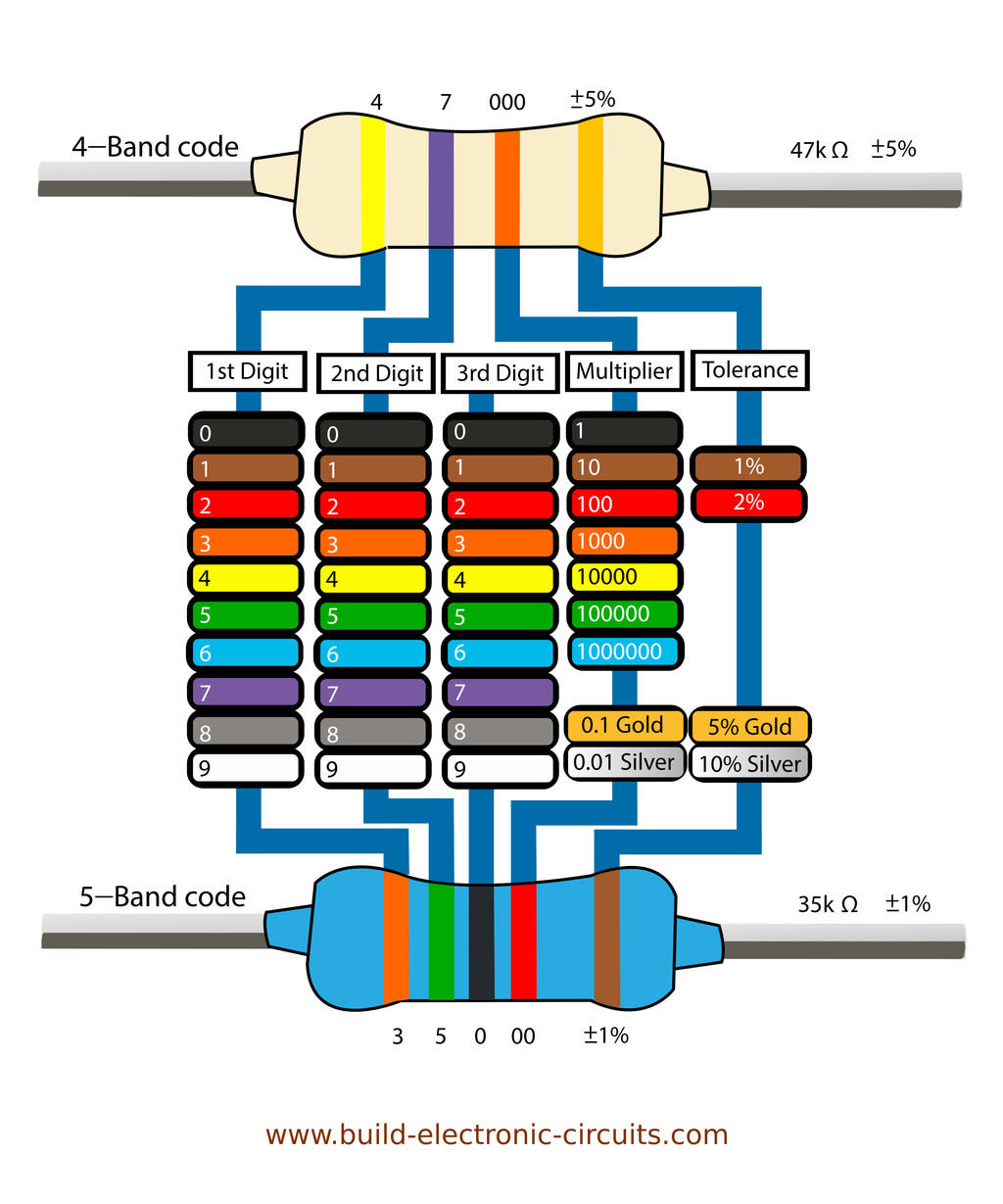

Multiply the previous result by this value. This time the meaning is different, because it's the multiplier band, and the corresponding factor is 100 Ω. Put them together, and you'll get the number 52.

You can express the multipliers with prefixes like kilo, mega or giga (kΩ, MΩ, GΩ), but also the scientific notation is used - e.g. Here, color represents the power of 10, by which the number created from previous bands must be multiplied. Then, we have the band called multiplier, and the colors meaning is different: color name It's the color code working for the first 2 or 3 bands from the left side. Every color is a different number: color name The value of the resistance is marked with the colors.
#Resistor color code chart how to#
Ok, let's get down to brass tacks: How to read resistor color code? If none of the above appear to help your problem, you can always use a multimeter to tell between two possible resistances - and reading directions. Usually, the first band will be closest to the end (but not always, so then use other clues).Again, read the resistor from left to right. However, the resistor color code never starts from such color - so if you find the metallic color on your resistor, it's definitely the tolerance value, so it must be placed on the right side. These values are marked with metallic colors - gold and silver, respectively. Very often the tolerance of the resistor is equal to 5% or 10%.Put the bigger group on the left side and read resistors from left to right. The larger gap occurs before the tolerance band. In a usual case, the bands are not spaced regularly - there's a gap, and bands are somehow grouped.The first question which usually arises is: how do I know from which end should I start reading my resistor color code? On the tiniest resistors the printed alphanumeric codes would be too small to read, so the color code was developed in the early 1920s. Color bands are an easy and cheap way of indicating the value of an electronic components.


 0 kommentar(er)
0 kommentar(er)
